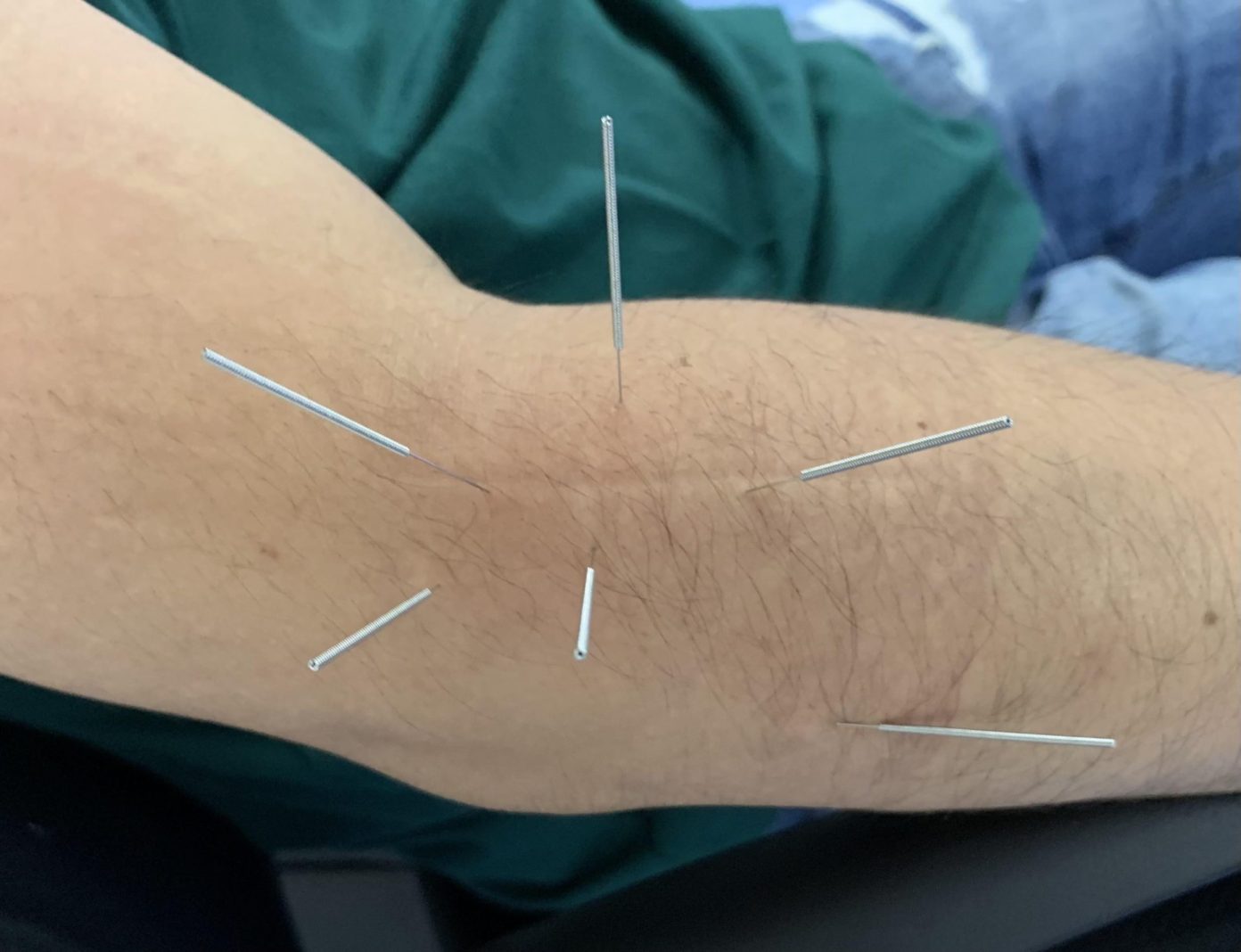If you’re experiencing pain in your lateral elbow area, you may be living with tennis elbow. There are a number of treatments available to help ease the painful symptoms of tennis elbow, but people who aren’t getting the results they want or people who are looking for more holistic methods of treatment may be looking for an alternative treatment. Acupuncture can help people living with tennis elbow experience pain relief that’s long-lasting and easy to access.
Lateral epicondylitis or lateral epicondylalgia, known colloquially as tennis elbow, shooter’s elbow, and archer’s elbow or simply lateral elbow pain, is a condition where the outer part of the elbow becomes sore and tender. Since the pathogenesis of this condition is still unknown, there is no single agreed name. While the common name “tennis elbow” suggests a strong link to racquet sports, this condition can also be caused by sports such as swimming and climbing, the work of manual workers and waiters, as well as activities of daily living.
Tennis elbow is an overuse injury occurring in the lateral side of the elbow region, but more specifically it occurs at the common extensor tendon that originates from the lateral epicondyle. The acute pain that a person might feel occurs as one fully extends the arm.
Traditionally, treatments for Tennis Elbow include:
Medications: Anti-inflammatory medications are often prescribed to people with long-term pain from Tennis Elbow. However, these medications often don’t work to relieve all pain associated with this condition. And, in these cases, medical practitioners may suggest the use of an arm brace and steroid injections in order to reduce swelling and inflammation.
Surgery: There is a surgical procedure that can help to remove scar tissue buildup that can contribute to Tennis Elbow pain. However, this procedure is only suggested for individuals who aren’t getting the results they need from medications alone. And, can be challenging to heal from and is invasive, so it’s not something that everyone wants to consider as an option for Tennis Elbow treatment.
Medications and surgical procedures all come with risks and side effects that can be damaging in the long term. Therefore, people living with Tennis Elbow pain may be looking for alternatives to treatments or therapies they can use in congruence with medications or even surgical procedures.
Acupuncture is great for treating pain, including pain that is associated with Tennis Elbow. Much of the pain that comes with a Tennis Elbow diagnosis is believed to be due to inflammation, which is the buildup of blood cells that leads to swelling. This buildup of blood cells causes pressure on the nerves, leading to pain. Most pain is caused by inflammation, so addressing and reducing inflammation is important for addressing pain. Acupuncture works to reduce inflammation and pain by stimulating nerves that are pressured by built-up blood cells due to inflammation. Thus, providing relief from pain that’s stimulated by inflammation as the result of Tennis Elbow.
Are you not getting the help you need for pain relief caused by Tennis Elbow with traditional treatments? Or, would you like to try something else rather than making the choice to get surgery or use medications that come with potential risks and side effects? If so, you may want to consider acupuncture as an alternative, supportive treatment. Acupuncture sessions are available at Acupuncture Zen in Delray Beach, performed by Dr. Tony Willcox, a certified, licensed, and experienced acupuncture specialist with over 16 years of experience.
